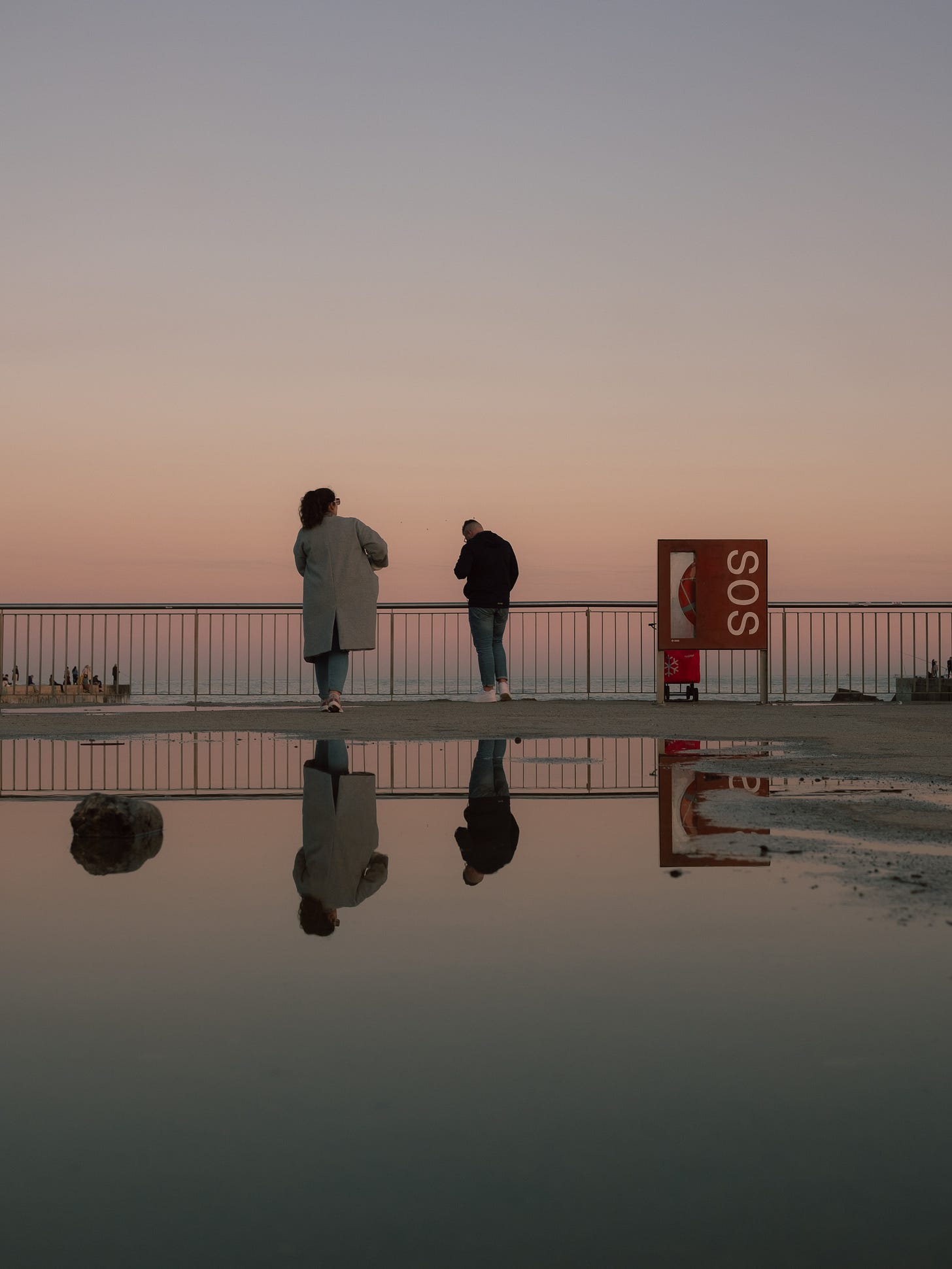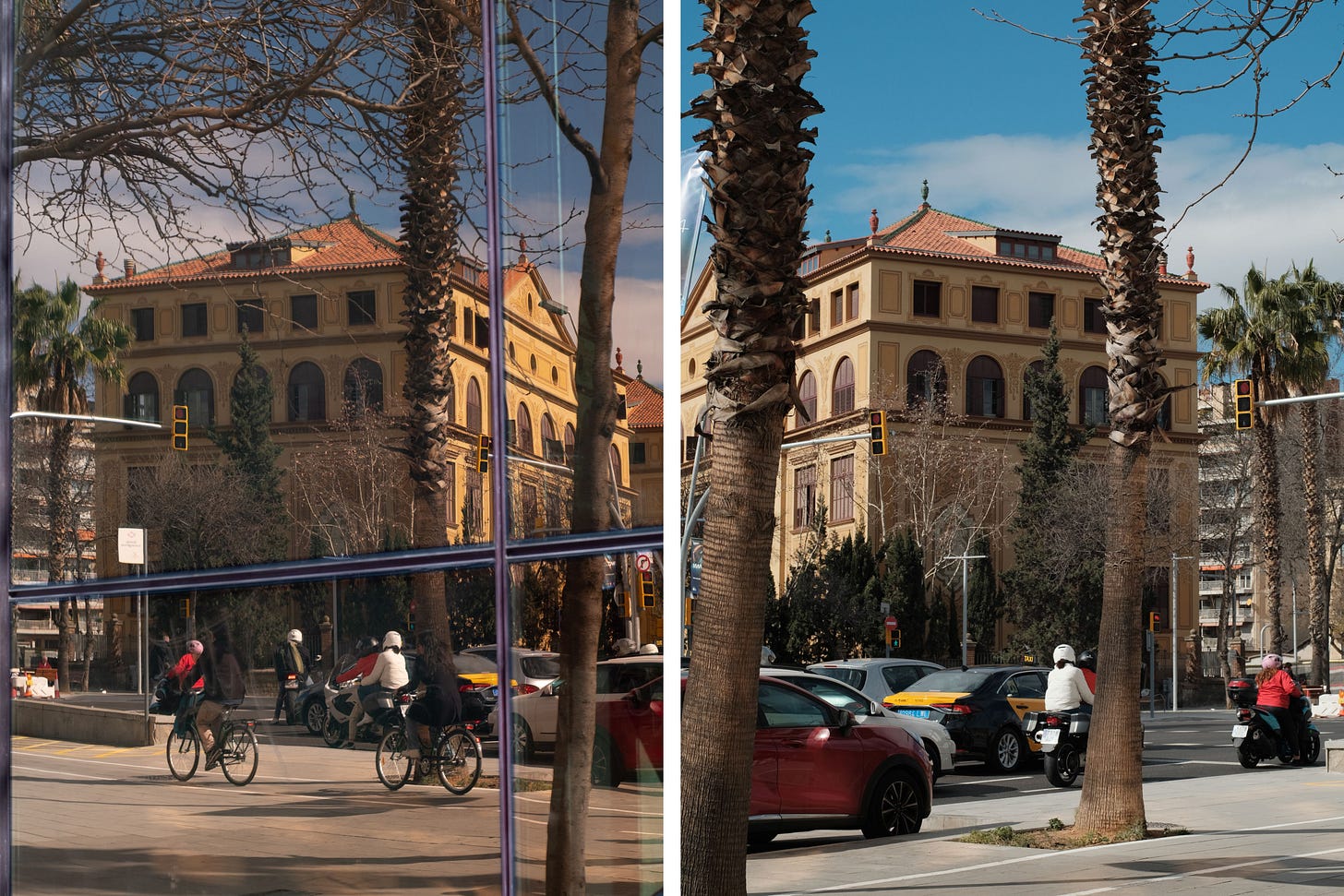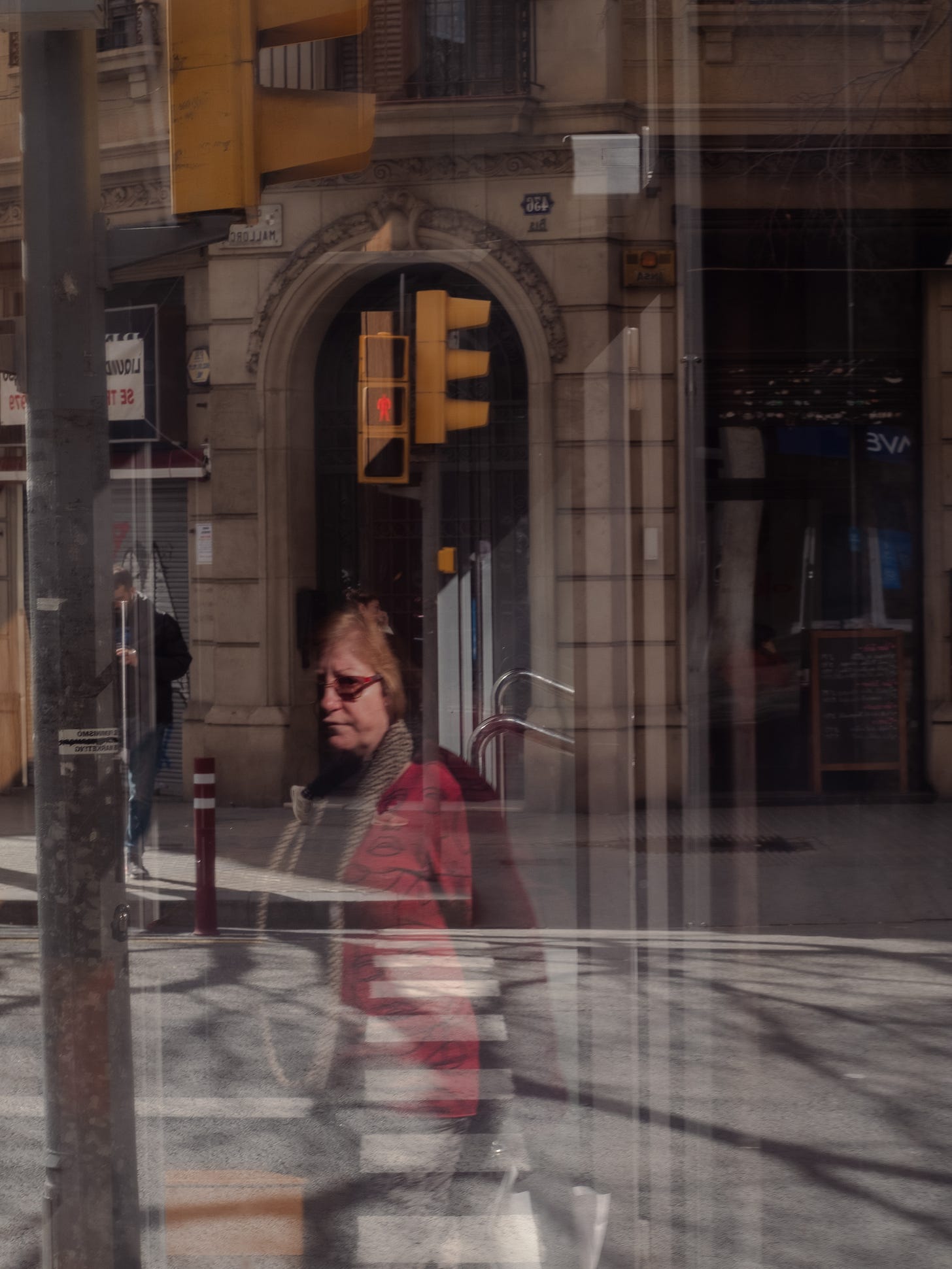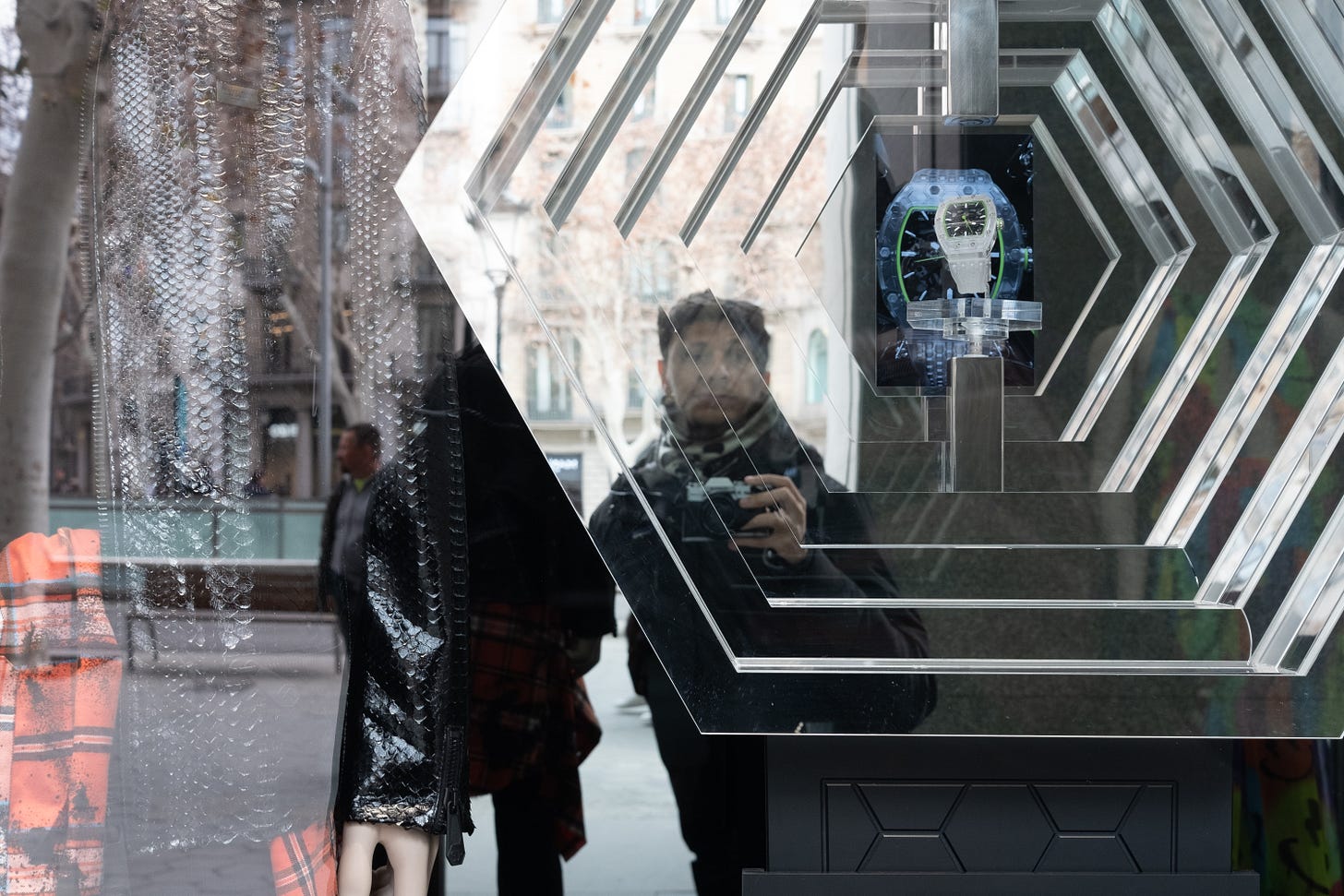Practice the fundamentals: on reflections and Saul Leiter
The second issue of the practice the fundamentals series exploring reflections and the great Saul Leiter
The idea behind the Practice the Fundamentals series is simple: create an approach to practice photography that improves specific skills. These skills are focused on the artistic side of photography rather than technical and gear issues. If you missed it, this post explains the series in more detail and how it’s inspired by musicians.
As usual, this is the recipe:
Define the technique
Find inspiration from someone who does it well (in photography or other visual arts)
Apply it
Define the technique: reflections
Today, we’re exploring reflections. Reflection photos are any photos that uses a reflective surface. The reflective surface can be a lake, a store window, or even a mirror at home. Did this need defining? Let’s look at inspiration.
Find inspiration: Saul Leiter (1923-2013)
A pioneer of color street photography, Saul Leiter’s work was ahead of its time. Despite finding success as a fashion photographer, his color street photography of New York in 50s and 60s only became known much later. His book, Early Color, was published in 2006 when Saul was 83. While the book was an overnight success, its photos had been made by Saul several decades earlier. A reminder that overnight success takes many years.
The matter is there’s always been people who like color. It’s not as if I was the only person. I’ve been described as being a pioneer. Am I pioneer? I don’t know that I’m a pioneer.
Saul Leiter studied painting before he picked up a camera, a detail that is noticeable in his photography. He used reflections to create abstract shapes and splashes of color reminiscent of impressionist painting. His photos have a paradoxical feel: they are slightly washed out but still feel vivid in color. His reflections often use storefronts, cars, and windows with condensation. His use of reflections creates photos that have several layers, often with blurred figures, that come out poetic.
Saul is the subject of the 2013 documentary, In No Great Hurry. He sits in his New York home talking about his work, life and more. I’ll share a few of my favourite quotes:
When I look back on my life and how badly prepared I was for living in the world, I was astonished that I had the nerve to have the illusion that I could manage to survive
I enjoyed looking at some of my color pictures, I thought they were rather nice.
I said to a friend of mine recently that a window covered with raindrops interests me more than a photograph of a famous person.
I was hoping to be forgotten. I aspired to be unimportant
I like having people like what I do
Some photographers like to set things up and control what they see and arrange things in a certain way. Cos that’s what they like to do, just like some people would never wear red socks.
Apply it: window shopping
Reflections on water are common in photography, they are typical of landscape photography scenes with mountains and lakes. In the city, you need rain or at least small puddles. The result adds some extra interest in images, but I wanted to try the next level of reflections in street photography.
Inspired by Saul’s abstract shapes and colors, I went out window shopping. It’s fairly straightforward to photograph things through a glass window, but it’s quite difficult to achieve the harmony and balance of Saul’s photos: the sweet spot between abstraction, familiar figures, and matching colors.
The first attempts were a bit rough and along the way, I’ve learned a few dos and don’ts:
Abstract photos don’t need to be noisy
Taking photos that have reflections, abstract shapes, and many colors doesn’t automatically make it a good image. The one below for example seemed like a good idea in the moment but turns out to be a confused mumbo jumbo.
Reflections don’t save a bad photo
On my first attempts, I resorted to looking for reflective surfaces and then photographing whatever was reflected. But a lot of times, the reflection is not adding anything new. In the example above, the fact that the image on the right is reflected doesn’t make it any more interesting than the one on the right. The one on the right is boring, and shooting its reflection is still boring.
Add a familiar figure
A familiar figure in the image creates an anchor in the midst of abstract elements that helps guide the viewer’s eyes. It balances out the abstraction and confusion created by reflections.
That’s it for today. Thanks for making it this far.
A few shots from this week:













